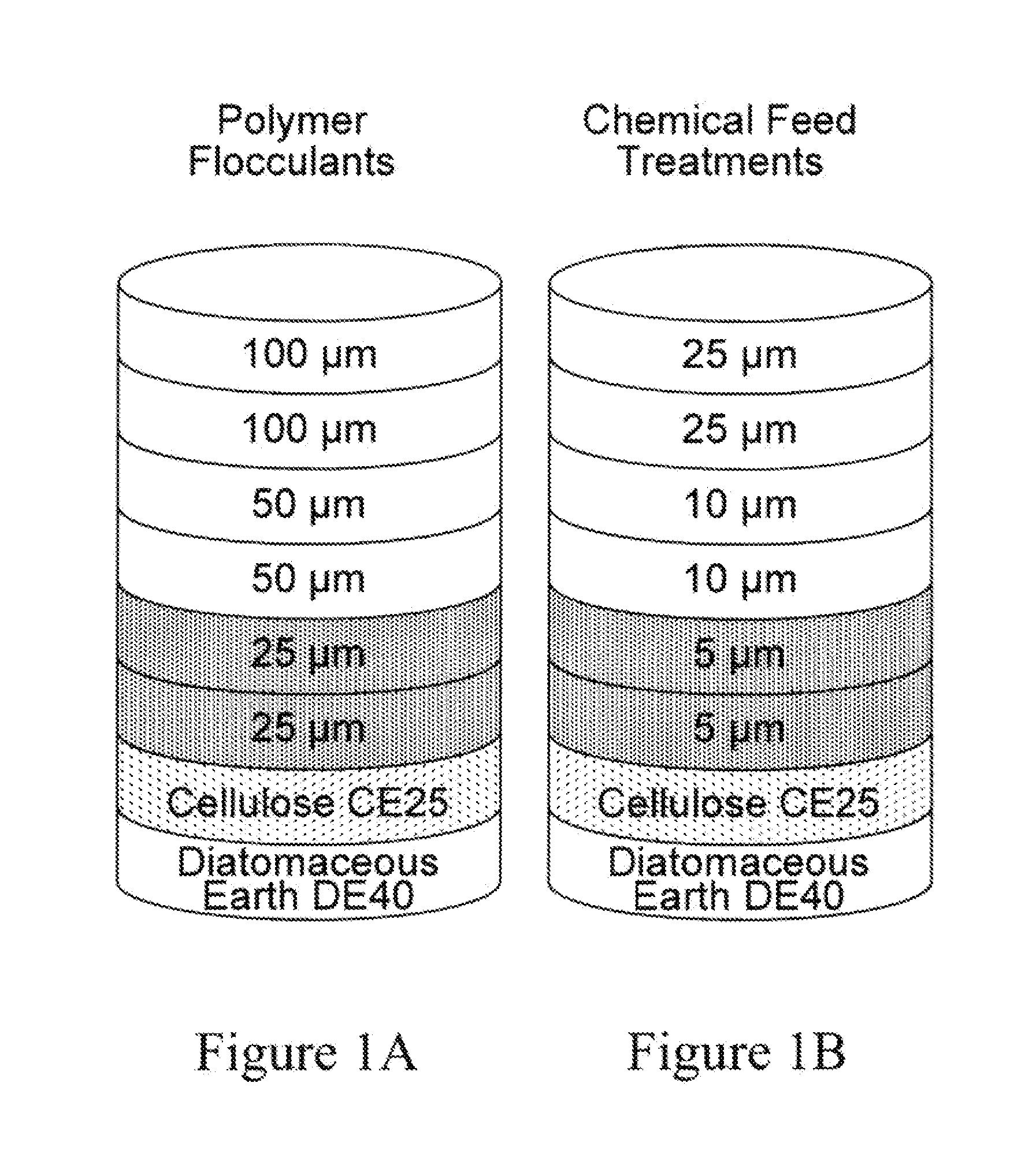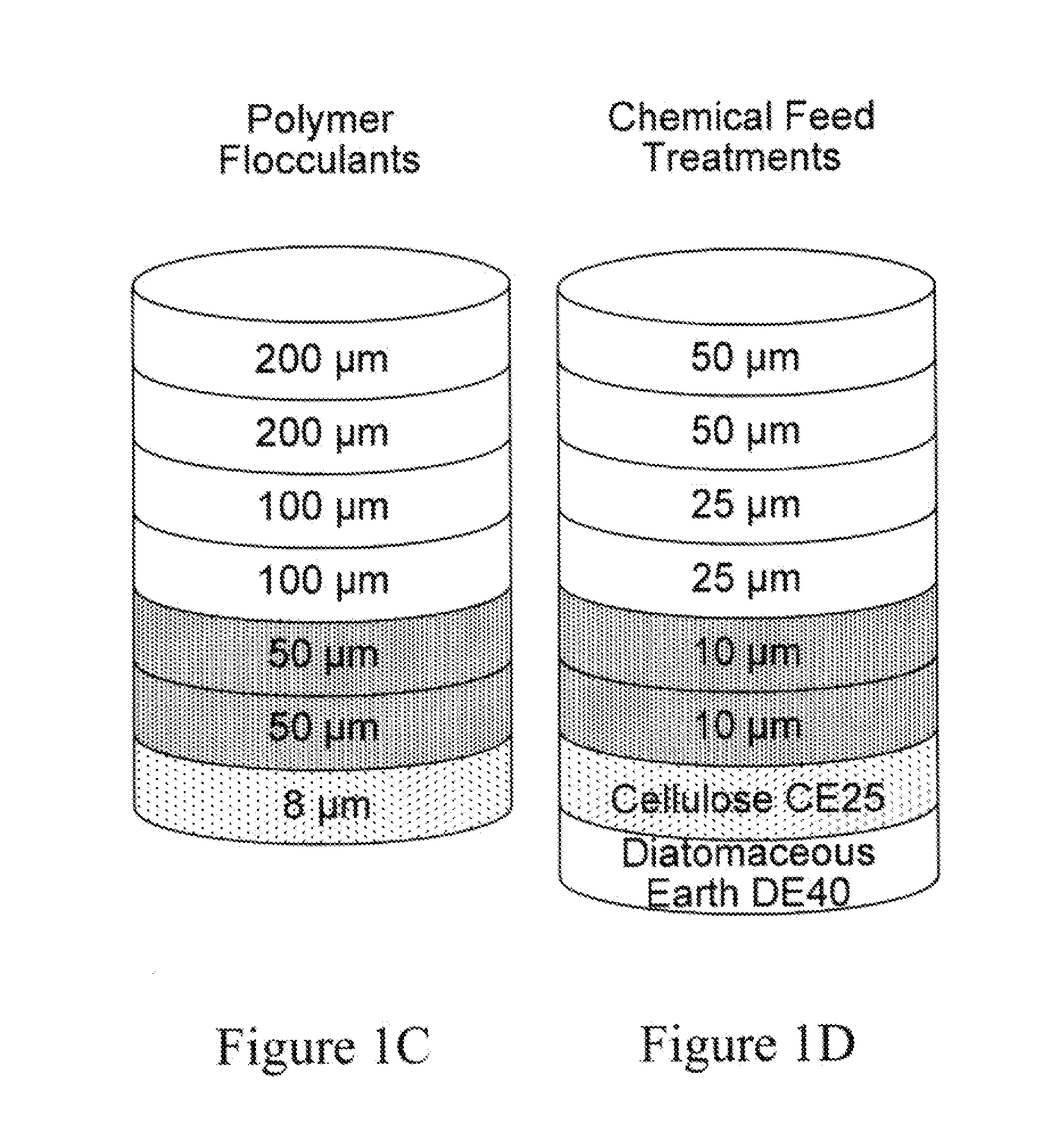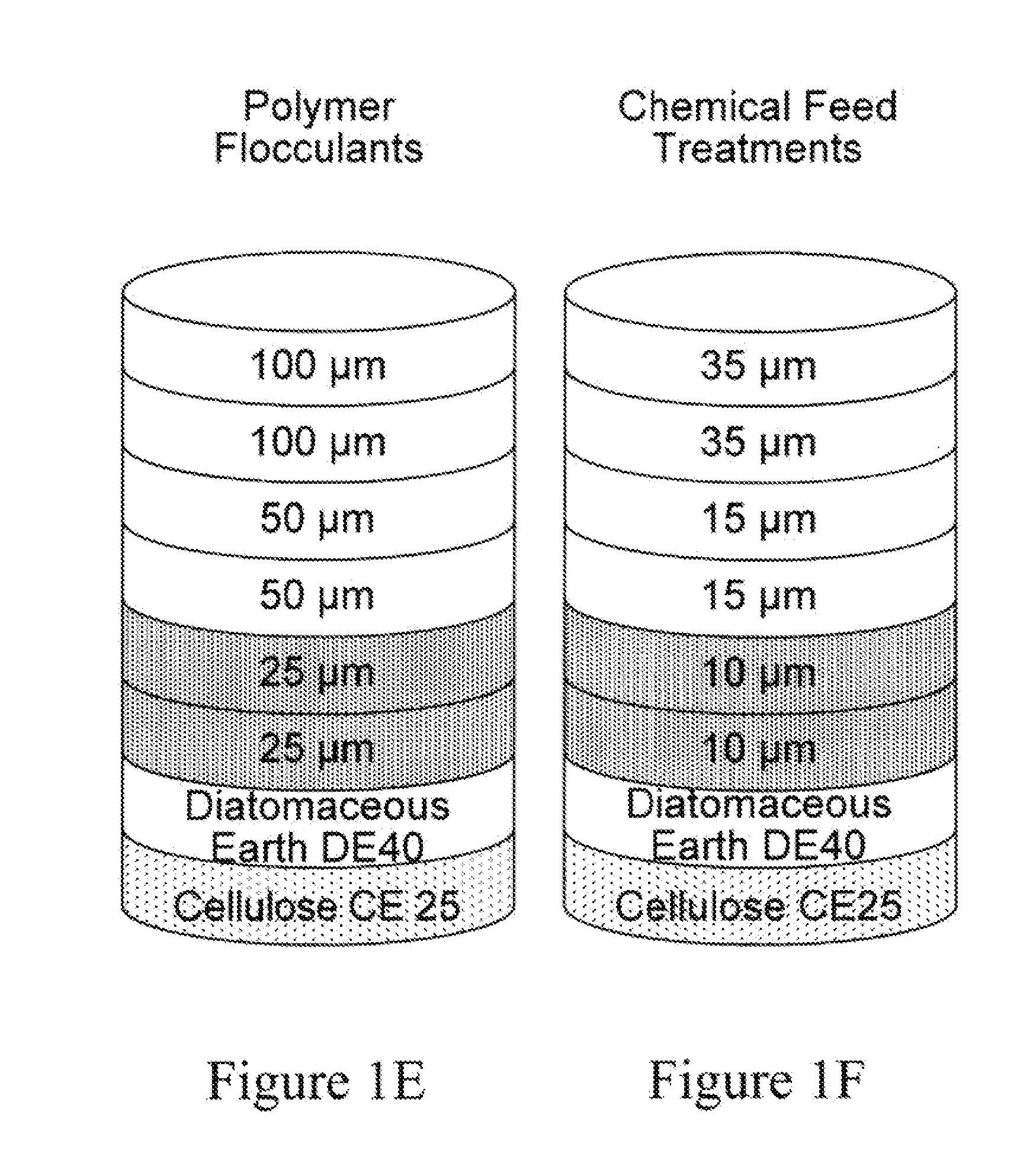Low Organic Extractable Depth Filter Media Processed with Solvent Extraction Method
a filter media and solvent extraction technology, applied in the field of low organic extractable depth filter media processed with solvent extraction method, can solve the problems of increased impurity load, difficulty in clarification and sterile filtration, and large amount of product, and achieves the effects of reducing flushing requirements, reducing the level of organic extractables, and increasing throughpu
- Summary
- Abstract
- Description
- Claims
- Application Information
AI Technical Summary
Benefits of technology
Problems solved by technology
Method used
Image
Examples
example 1
[0094]FIG. 2 depicts flushing curves for primary clarification filters with non-extracted media at a working flow rate of 600 liters / m2 / hr.
[0095]In a representative experiment, depth filter comprising of graded layers of non-woven fibers, cellulose, and diamatoceous earth (DE) or non-woven fibers was flushed for approximately 100 L / m2 at a flow rate of 600 liters / m2 / hr. The flushing curves for the depth filter comprising of graded layers of non-woven fibers, cellulose, and diamatoceous earth (APC and BPC) have a TOC of approximately 8-10 ppm whereas depth filter comprising of graded layers of non-woven fibers (CPC) has a TOC of approximately 4 ppm as shown in FIG. 1. The TOC (ppm) of the control depth filter (D0HC) is between 1-3 ppm for a flush volume of approximately 100 L / m2.
example 2
[0096]FIG. 3 depicts flushing curves for multiple embodiments of the primary clarification filters with extracted media at a working flow rate of 600 liters / m2 / hr according to the invention.
[0097]In a representative experiment, depth filters of graded layers of extracted non-woven fibers, cellulose, and diamatoceous earth or extracted non-woven fibers were flushed for approximately 100 L / m2 at a flow rate of 600 liters / m2 / hr. The rolls of non-woven filter media (12.5″ in diameter and 16″ in width) are extracted with hydrofluorocarbon solvent (HFE-72E) from 3M in the TSC extractor for a spraying time of 1200 min and drying time of 1500 min. The flushing curves for the depth filter comprising of graded layers of non-woven fibers, cellulose, and diamatoceous earth (APC and BPC) have a TOC of approximately 1-3 ppm for a flush volume of approximately 100 L / m2 whereas depth filter comprising of graded layers of non-woven fibers (CPC) has a TOC of lesser than 1 ppm for no flush volume. The...
example 3
[0098]FIG. 4 depicts flushing depicts curves for multiple embodiments of the primary clarification filters with extracted media at a working flow rate of 100 liters / m2 / hr according to the invention.
[0099]In a representative experiment, depth filter comprising of graded layers of extracted non-woven fibers, cellulose, and diamatoceous earth or extracted non-woven fibers was flushed for approximately 100 L / m2 at a flow rate of 600 liters / m2 / hr. The rolls of non-woven filter media (12.5″ in diameter and 16″ in width) are extracted with hydrofluorocarbon solvent (HFE-72E) from 3M in the TSC extractor for a spraying time of 1200 min and drying time of 1500 min. The flushing curves for the depth filter comprising of graded layers of non-woven fibers, cellulose, and diamatoceous earth (APC and BPC) have a TOC of approximately 1-3 ppm for a flush volume of approximately 90 L / m2 whereas depth filter comprising of graded layers of non-woven fibers (CPC) has a TOC of lesser than 1 ppm for no f...
PUM
| Property | Measurement | Unit |
|---|---|---|
| Fraction | aaaaa | aaaaa |
| Thickness | aaaaa | aaaaa |
| Thickness | aaaaa | aaaaa |
Abstract
Description
Claims
Application Information
 Login to View More
Login to View More - R&D
- Intellectual Property
- Life Sciences
- Materials
- Tech Scout
- Unparalleled Data Quality
- Higher Quality Content
- 60% Fewer Hallucinations
Browse by: Latest US Patents, China's latest patents, Technical Efficacy Thesaurus, Application Domain, Technology Topic, Popular Technical Reports.
© 2025 PatSnap. All rights reserved.Legal|Privacy policy|Modern Slavery Act Transparency Statement|Sitemap|About US| Contact US: help@patsnap.com



